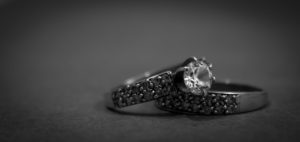 For centuries now, diamonds have remained the most coveted of all gemstones. The beauty of a diamond is often associated with its clarity.
For centuries now, diamonds have remained the most coveted of all gemstones. The beauty of a diamond is often associated with its clarity.
So, what factors determine the clarity of a diamond? To be able to answer this question, we must first understand the process of diamond formation.
Diamonds were created approximately 3 million years ago when the carbon atoms present in the Earth’s crust underwent the process of crystallization and transformed into precious stones under the effect of immense heat and pressure. However, not every diamond was created equal — the heat and pressure that caused crystallization also caused the appearance of inclusions and blemishes in diamonds. The term ‘inclusion’ refers to the internal defects in a diamond while the term ‘blemishes’ refers to its surface flaws.
What Is Diamond Clarity?
Diamond clarity is a metric used to study the minute imperfections present on a diamond’s surface and within it. Heat and pressure play an important role in the formation of diamonds and thus, inclusions and blemishes are inevitable. However, it must be highlighted that most of the imperfections that exist within a diamond cannot be seen by the naked eye and are often referred to as ‘internal characteristics’ by gemologists as they give diamonds their natural character, which is analyzed in detail on other source for instance click this link.
Studying diamond clarity involves studying the number, nature, size, position, and relief of these internal characteristics and assessing how these internal characteristics affect the beauty and quality of a diamond. The diamonds with the highest clarity have fewest and minutest imperfections and thus, are priced very high. Every diamond has some internal characteristics and no diamond is pure. However, the more pure a diamond, the higher will be its clarity.
What Factors Determine the Diamond Clarity Grade?
Before we can discuss the six categories on the diamond clarity grade scale, we must attempt to understand how varying factors affect a diamond’s clarity. Here we discuss the most important of these factors.
Size of Inclusions
The clarity grade of a diamond will be much lower when there is the presence of several different clarity characteristics.
Number of Internal Characteristics
The count of internal characteristics also affects the clarity of a diamond — the more the number of internal characteristics, the lower will be the diamond clarity.
Location of Inclusions
An inclusion located close to the center of the diamond will impact the diamond clarity more than an inclusion located on the girdle of the diamond. Similarly, if inclusion is located near the pavilion, it will get reflected, thereby lowering the diamond clarity grade.
Nature of Inclusions
The nature of the inclusion takes into account the type and depth of the inclusion. However, it must be highlighted that any characteristic restricted to the surface and that has not penetrated the diamond is considered a blemish and not inclusion.
Relief
The relief indicates how noticeable the inclusion is on the host diamond. The more the relief, the darker will be the diamond, and the lower will be its diamond clarity grade.
Diamond Clarity Grades Explained
In 1953, Richard T. Liddicoat, an American Gemologist, founded the Gemological Institute of America (GIA) diamond grading system and clarity scale. The GIA has six categories, with some of the categories further divided, leading to 11 specific grades. Here are we discuss these six broad categories.